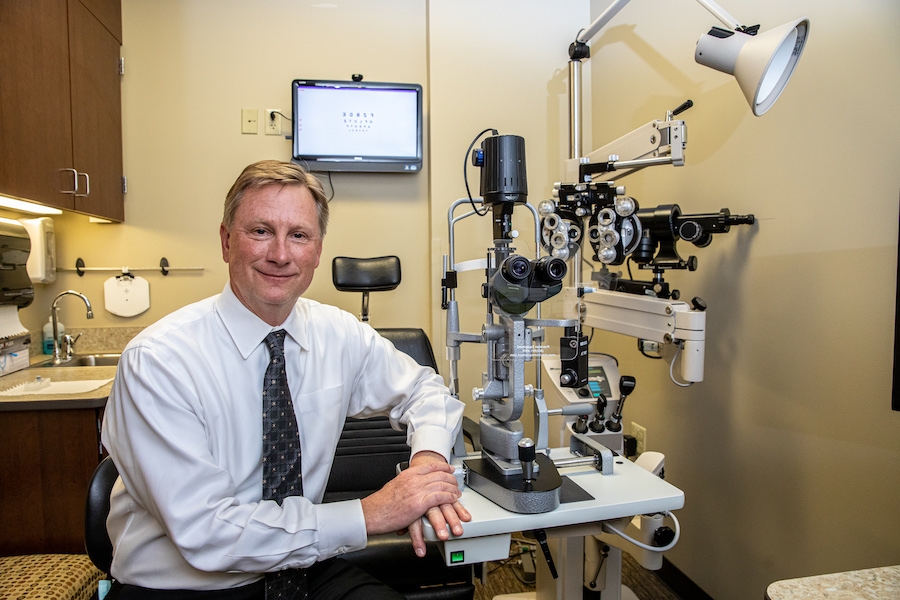Brand Story – With premium intraocular lenses, cataract surgery treats more than cloudy vision.
Not long ago, standard cataract surgery was almost always followed by a glasses fitting. Once cloudy lenses were replaced, patients still needed their blurry vision corrected. Thanks to the advancement of premium intraocular lenses, Oregon Eye Specialists (OES) can correct cloudy lenses and blurry vision at the same time.
Unfortunately, cataracts are a fact of life for anyone who reaches old age, effecting more than 70% of adults. Many of these individuals will also suffer from presbyopia, another age-related change that results in poor near vision and dependence on reading glasses or bifocals.
“When I started my practice in Ophthalmology in the mid-nineties, cataract surgery meant removing cloudy lenses from the eye, putting suitable lens replacements in and following up with a glasses fitting,” explains Dr. Martin Balish, M.D., Oregon Eye Specialists. “In the past 25 years, the mentality has changed. When we take care of people for cataract surgery, we not only correct their cloudy vision, we correct their distance vision and fix their presbyopia as well.”
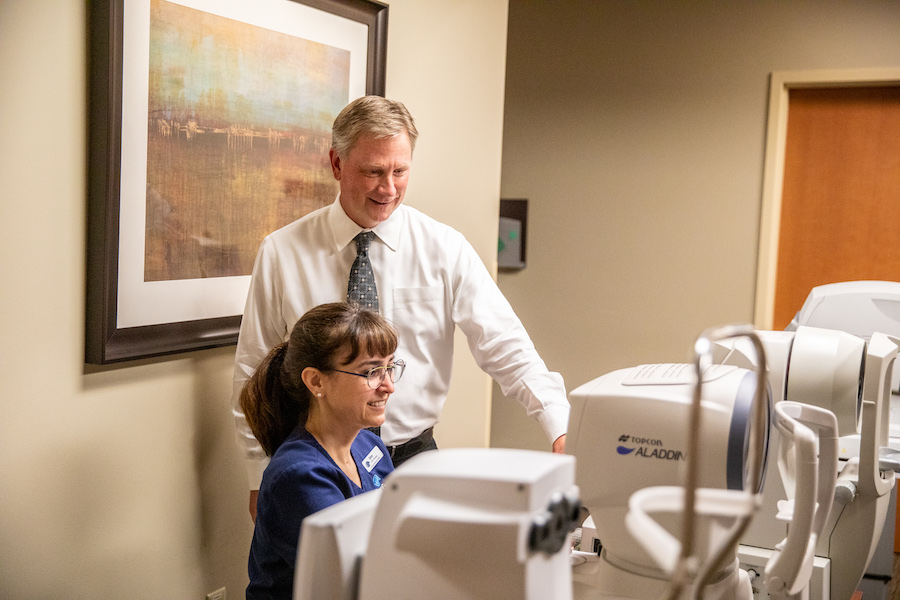
Standard intraocular lenses (IOLs) focus well at a single distance. So, if patients choose IOLs that let them see far away, they will need reading glasses to see up close. Premium IOLs, on the other hand, aim for glasses-free vision that lets people see clearly at all distances. Another premium lens, toric IOLs, tackle astigmatism.
Premium IOLs continue to rise in popularity.
“They’ve been around since the beginning when I was doing my training, but they weren’t very good or widely accepted. There’s just been a massive amount of innovation and continued improvement since then,” Balish adds.
Originally, cataract procedures took one to two hours. They were conducted in a hospital setting and followed by weeks of recovery. After three months, patients returned for the other eye.
Today, the patient experience and recovery differ drastically. The surgery takes about 15 minutes, generally conducted in an outpatient setting, and requiring no stitches. Visual recovery usually happens in days and patients return for the second eye in two to four weeks.
The field of ophthalmology evolves rapidly, but the responsibility falls on doctors to vet and master new treatments. Although they have all undergone comprehensive medical training, Oregon Eye Specialists’ ophthalmologists never stop learning, bringing clients the market’s best technologies and innovations. In the Portland area, this approach has earned them a reputation for cutting-edge services.
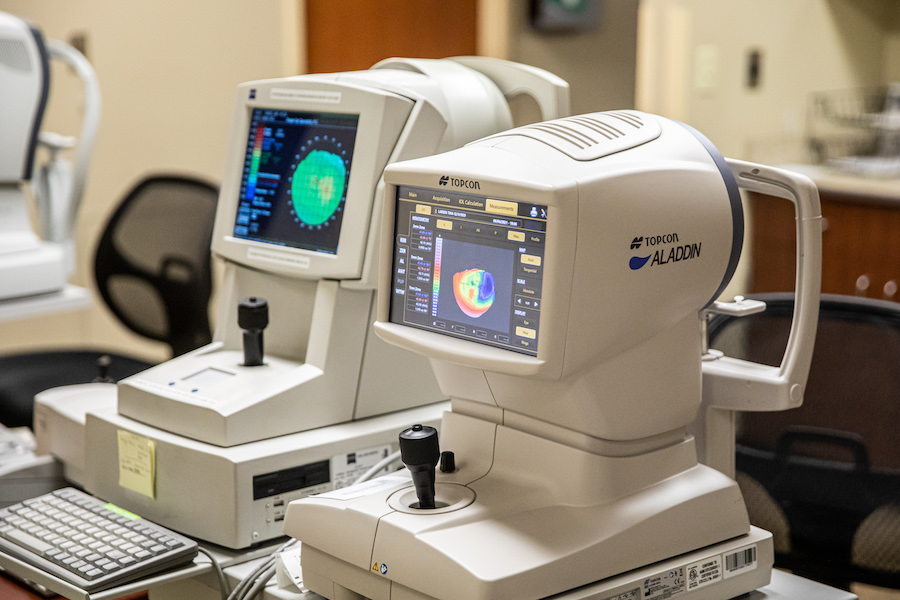 Optical testing
Optical testing
While many places provide cataract surgery, OES patients value the organization’s commitment to new technologies, high-quality staff and individualized care. When designing treatment plans for clients, its doctors get to know each person and their unique circumstances: priorities, hobbies, lifestyle and budget.
“We’re interested in individualizing patient care. For example, someone may be an author or lawyer and want to work on their computer full-time, so we can use cataract surgery to clear their vision but also give them a visual result that fits into their life,” Balish explains.
An author’s needs significantly differ from those of a hunter who looks through binoculars all day long. Every person, every story is unique.
One client came to Oregon Eye Specialists with an atypical cataract caused by electrocution from a powerline. As a family man in his forties, he wanted to help his kids with their homework and read to them at night, so he sought presbyopia-correcting lenses.
“He knew he wouldn’t be able to do that without glasses if he had standard cataract surgery, so I did the surgery for him and his result is fantastic,” Balish recalls. “I still see him 15 years later for checkups, and he’s seeing well without glasses.”
Supporting patients goes beyond one appointment or procedure, and many OES client relationships span decades. Physician owned and operated, Oregon Eye Specialists was founded over 25 years ago and has six locations.
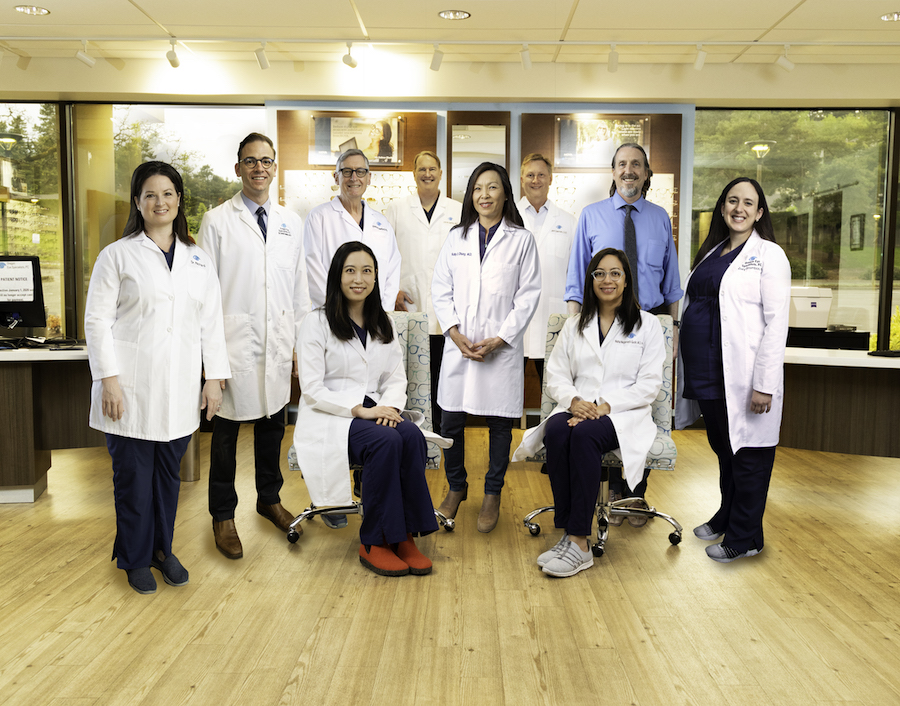 Dr. Christen Richard, Dr. David Sanders, Dr. Thomas Crawford, Dr. Devin Gattey, Dr. Kelly Chung, Dr. Martin Balish, Dr. Daniel Brown, Dr. Zoey Stoumbos. Sitting: Dr. Jacqueline Ng, Dr. Nisha Nagarkatti-Gude. Not pictured: Dr. Lorinna Lombardi, Dr. Coleen Palileo.
Dr. Christen Richard, Dr. David Sanders, Dr. Thomas Crawford, Dr. Devin Gattey, Dr. Kelly Chung, Dr. Martin Balish, Dr. Daniel Brown, Dr. Zoey Stoumbos. Sitting: Dr. Jacqueline Ng, Dr. Nisha Nagarkatti-Gude. Not pictured: Dr. Lorinna Lombardi, Dr. Coleen Palileo.
As the first to bring premium IOL technology to Portland, the team continues looking ahead toward the next innovation — currently on their radar are light adjustable lenses that use ultraviolet radiation to change the shape of the lens within the eye. When considering any new technology, the team conducts research, meets with doctors already using it and evaluates safety and effectiveness.
Oregon Eye Specialists invests heavily in technology but gives equal attention to the quality of its team — from receptionists to technicians to assistants.
“That’s pretty key to our organization. We put a premium on finding and training excellent personnel,” Balish notes. “When you go to the dentist, the technician spends a lot of time with you, and that person can make or break your visit. We have that too. We rely heavily on the quality and training of our personnel.”
Even though cataracts are common, and millions of surgeries are performed in the US every year, the onset of cloudy vision can come as a shock. A team of skilled people and a personalized approach make all the difference to someone struggling with vision impairment.
“Cataracts are a part of aging for many people, but you don’t really know what it’s like until you get to that age and it’s happening to you,” Balish summarizes. “Cataract surgery and the premium intraocular lenses we use allow us to correct vision beyond what it was before. My whole career has been about chasing that perfection.”
Visit www.OregonEyes.net.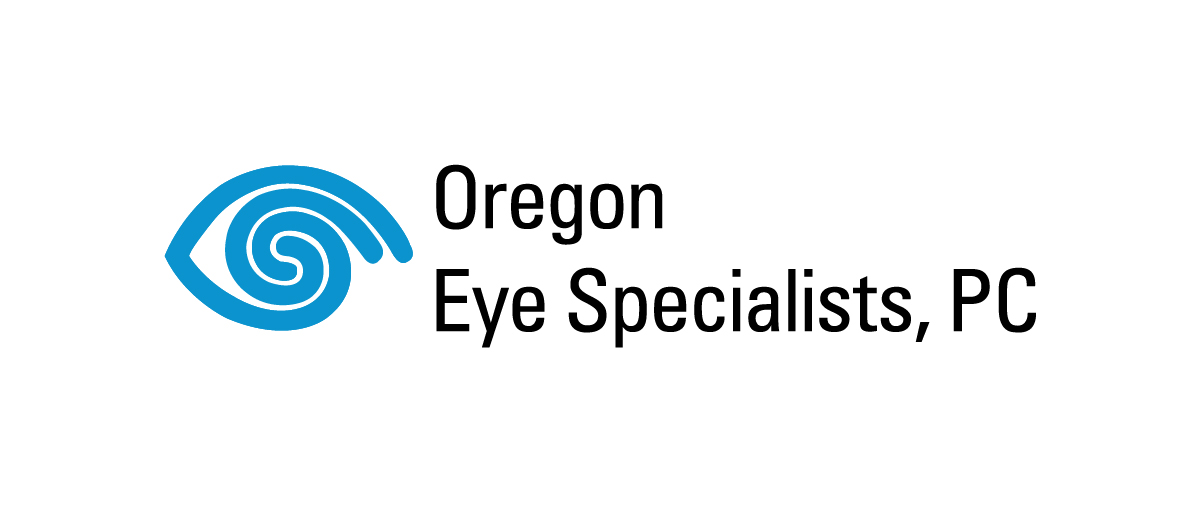
Brand stories are paid content articles that allow Oregon Business advertisers to share news about their organizations and engage with readers on business and public policy issues. The stories are produced in house by the Oregon Business marketing department. For more information, contact associate publisher Courtney Kutzman.


